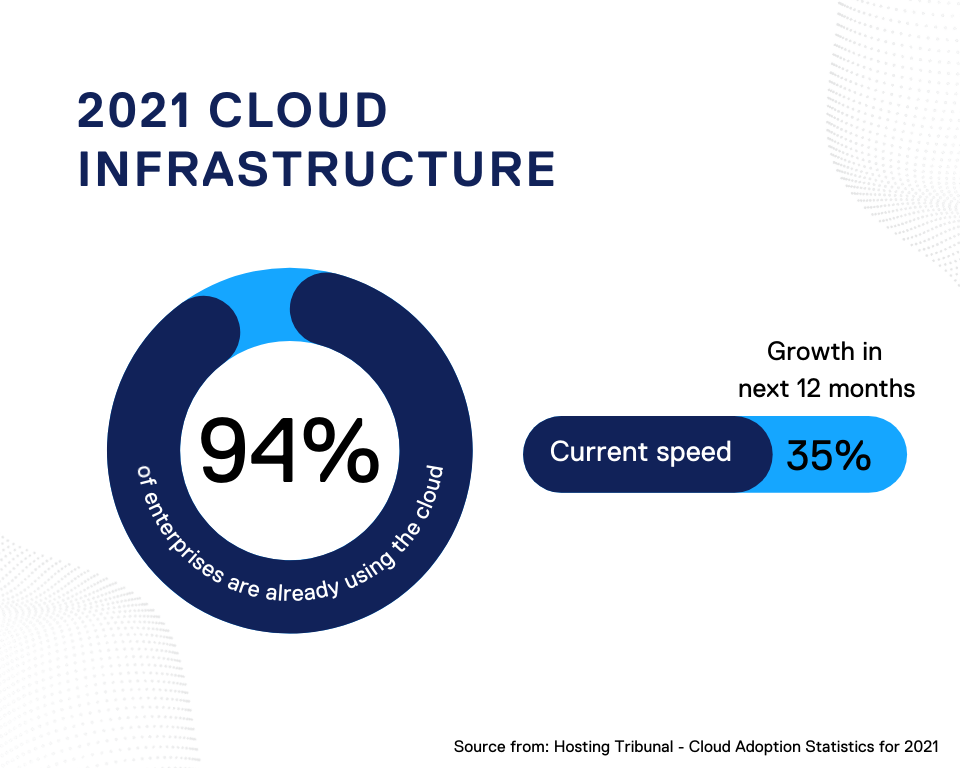Our thoughts on the future of digital innovation and the cloud.

Infrastructure migration can be one of the most daunting (yet crucial) tasks for a business to undertake, especially in today’s age, with cloud technologies entering the mainstream and perhaps required because of lockdown restrictions. With cloud services like Azure becoming more widespread and affordable every day, a move away from on- premises infrastructures will become inevitable for many businesses, sooner or later. In 2021, the public cloud infrastructure will grow by 35 percent, while 94% of enterprises already use the cloud (Source: HostingTribunal).
Cloud service providers offer various tools like Microsoft Azure Migrate to make this process a little less convoluting for everyone. Without the proper planning and professional assessment being done in advance, any attempts to migrate applications and on-premises server infrastructures to the cloud will almost definitely lead to problems and complications.

At the origin of migration initiatives, we see partners deciding between these important considerations below to define their ideal working environment in Azure.
1. Old Functions OR New Possibilities:
Migrating to the cloud will modernize various workloads and the way IT runs. Microsoft Azure will reduce the number of routine maintenance activities and open up new opportunities to use IT workers’ skills. Meanwhile, the Azure Migrate Program provides solutions for retaining practises, controls and frameworks that have been proven to succeed. Where to fall on this scale is a crucial choice for IT administrators.
2. Change Management OR Communize Operations:
With better access to self-service implementation and decision-making flexibility, change management and control will look distinct in the cloud. Workload teams usually choose mobility to make rapid improvements to workloads and ecosystems, and exceptional cloud centres aim to guarantee the changes are secure, stable and operationally effective. The leading judgment here is how much cloud governance criteria can be automated.
3. Standardized OR Specialized Services:
It is certainly possible to build several and connected layers of organizational controls in Microsoft Azure to satisfy different workloads’ specialized needs. For example, primary IT will provide basic operating requirements for all workloads while enabling workload teams to set up additional guardrails. Leaders must decide which central or primary IT teams will perform everyday operations
4. Cloud Architecture- Traditional OR Re-invented:
The first instinct for most teams might be to recreate on-site construction and architecture, “as-is” in Azure. When a low complexity and a tightly scaled nature transfer to the cloud, this may be the best solution. As migration scopes expand – covering more programmes, databases, and technology components – achieving higher performance in Azure would become much more desirable. Which path to take during iterative migration management is a vital decision.
Resiliency is Key
We’ve seen massive change and resiliency in our interactions with clients and each other. Working remotely for most organizations has changed how we think about running our business and what we need to do for the future.
As the environment adapts to the reality of an increasingly integrated workforce, the organization must support an increased digital transition. Invero is offering an Azure Immersion Workshop on March 25, 2021 that is a hands-on live session intended to present and familiarize you with Microsoft Azure technology and developments.

